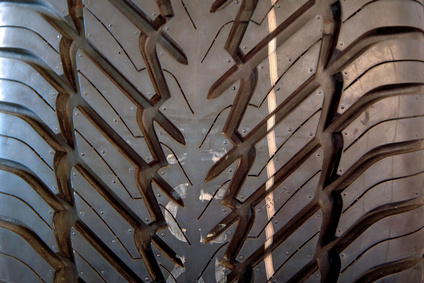
Regular tire rotation provides several benefits: even tire wear, increased tire life and improved handling. According to Goodyear Tire Engineering, radial tires can be moved to any position on a car. Tires should be rebalanced and rotated every 5,000 to 8,000 miles. This can be done in conjunction with every or every other oil change, to ensure it becomes a regular practice.
The proper rotation pattern is dependent upon two variables: the type of vehicle and the types of tires mounted on the vehicle. Front wheel drive cars will use a different rotation pattern from rear wheel and four wheel drive models. Most cars will have four or five tires of the same size and tread pattern. If the spare is the same as the four in-use tires and mounted on the same type of wheel, a five tire rotation pattern can be used. If the spare is a different type of tire or is mounted on a different type of rim, use a four wheel rotation pattern.
Some cars will have performance tires that are unidirectional, or should only be mounted on the car to rotate in one direction. Another possibility, again usually on high performance cars, is different size tires on the front and back axles. These special cases dictate modified tire rotation patterns.
The Tire and Rim Association, a tire industry trade group, provides the following information on radial tire rotation patterns:
On front wheel drive vehicles, the rotation pattern is called a forward cross. The rear tires are crossed, or moved to the opposite side of the vehicle, on the front axle. The front tires are moved straight back to the rear axle, on the same side. If a five tire rotation is in use, the passenger side front tire moves back to the spare position, and the spare slides out to the right side rear location.
On rear wheel drive and four wheel drive vehicles, use a rear cross pattern. The front tires move to the rear and cross over to the opposite side. The rear tires move straight forward to mount on the front axle, on the same side. The five tire option has the driver side front tire crossing down to the spare position and the spare goes out to the rear axle on the passenger side.
Cars with unidirectional tires must keep the tires on the same side of the vehicle when they are rotated. This means that the rotation is a straight swap from the front to the back and back to the front, keeping the tires on the same side of the car.
Cars with different sized tires between the front and rear axle must keep the appropriate sized rubber on the correct axle. The rotation pattern is a simple side to side, right to left and left to right on the same axle.